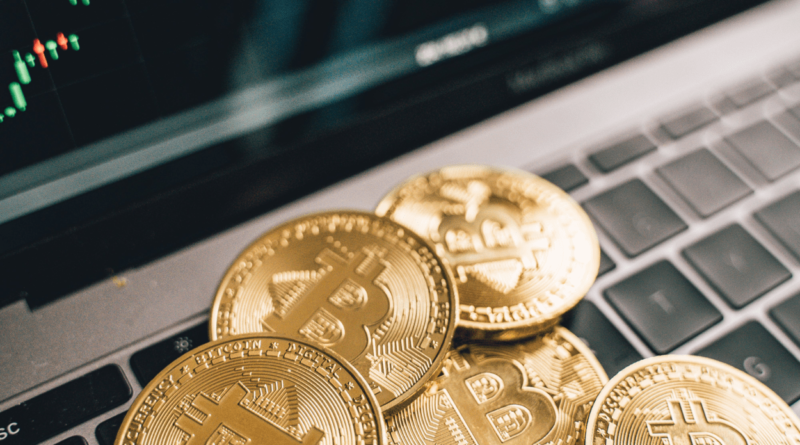What is cryptocurrency and how does it actually works
What is cryptocurrency?
Cryptocurrency is akin to digital cash that operates without a central authority overseeing it. It functions on blockchain technology. While you may be familiar with popular ones like Bitcoin and Ethereum, there are actually more than 9,000 different cryptocurrencies available.
Table of Contents
ToggleInstead of physical money, these transactions exist as digital entries in an online database that details specific dealings. When you send cryptocurrency, the transaction is logged in a public ledger, and you store it in digital wallets.
The term “cryptocurrency” derives from using encryption to verify transactions. This involves sophisticated coding to safeguard data as it moves between wallets and public ledgers. The primary objective is to ensure security.
How does cryptocurrency work?
Cryptocurrency is comparable to digital money, distinguished by its encryption and lack of control by a central authority. In contrast to traditional currencies like the U.S. Dollar or the Euro, the value of a cryptocurrency is determined by its internet users, not a central entity.
While people can use cryptocurrency for purchases, many view it more as an investment akin to stocks or precious metals. It represents an intriguing asset class, but purchasing it involves inherent risks. In-depth research is crucial to grasp the workings of each system.
The inaugural cryptocurrency was Bitcoin, introduced by Satoshi Nakamoto in a 2008 paper titled “Bitcoin: A Peer-to-Peer Electronic Cash System.” Nakamoto conceived it as an electronic payment system founded on cryptographic proof rather than trust.
This cryptographic proof entails validating and documenting transactions on a blockchain.
Examples of cryptocurrency
- Bitcoin (BTC):
- Introduction: The first and most well-known cryptocurrency.
- Purpose: Peer-to-peer electronic cash system.
- Key Features: Limited supply (21 million coins), decentralized, uses blockchain.
- Ethereum (ETH):
- Introduction: Designed for smart contracts and decentralized applications.
- Purpose: Enables developers to build and deploy decentralized applications.
- Key Features: Smart contract functionality, Ether (ETH) is its native currency.
- Binance Coin (BNB):
- Introduction: Created by Binance, one of the largest cryptocurrency exchanges.
- Purpose: Initially used to pay for transaction fees on the Binance exchange.
- Key Features: Wide range of use cases within the Binance ecosystem.
- Ripple (XRP):
- Introduction: Developed for fast and low-cost international money transfers.
- Purpose: Facilitates cross-border payments for financial institutions.
- Key Features: Speedy transactions, focus on banking partnerships.
- Cardano (ADA):
- Introduction: A blockchain platform with a research-driven approach.
- Purpose: Aims to provide a more secure and scalable infrastructure for the development of decentralized applications.
- Key Features: Emphasis on academic and scientific research, focus on sustainability.
How to buy cryptocurrency?
If you’re thinking about how to safely get into cryptocurrency, follow the process described in the below points.
Pick a Platform
Start by choosing where to buy. You’ve got two main options:
- Traditional Brokers: These are online brokers that handle buying and selling not just for cryptocurrencies but also other stuff like stocks and bonds. They usually have lower trading costs but fewer crypto choices.
- Cryptocurrency Exchanges: There are tons of these, each offering different cryptocurrencies, storage options, interest-bearing accounts, and more. Keep in mind that many charge fees based on your assets.
When comparing platforms, look at what cryptocurrencies they have, the fees they charge, how secure they are, storage and withdrawal choices, and any educational resources they offer.
Add Money to Your Account
After picking your platform, the next step is to put money in your account so you can start trading. Most crypto exchanges let you buy crypto using regular money, like US Dollars, British Pounds, or Euros, through your debit or credit cards—though this varies by platform.
Buying crypto with credit cards is seen as risky, and not all exchanges support it. Some credit card companies also say no to crypto transactions. Why? Because cryptocurrencies can be really unpredictable, it’s not smart to risk getting into debt or paying high credit card fees for something so volatile.
Other platforms might accept ACH transfers or wire transfers. But keep in mind that the accepted payment methods and how long it takes for deposits or withdrawals can be different for each platform. Also, the time it takes for deposits to go through can vary depending on how you pay.
A big thing to look into is fees. This includes possible fees for depositing and withdrawing, as well as fees for trading. Fees change depending on how you pay and which platform you’re using, so it’s good to check that out from the start.
Make a Purchase
Once you’ve got your platform set up, you can make a move using the website or app. If you’re aiming to buy crypto, pick “buy,” choose the type of order you want, put in how much crypto you’re after, and confirm your decision. It works the same for selling.
There are other ways to get into crypto too. You can use payment services like PayPal, Cash App, or Venmo to buy, sell, or hang on to cryptocurrencies. And if you’re into investment options, here are a few:
- Bitcoin trusts: Get shares of these trusts with a regular brokerage account. They let regular folks like us get in on crypto through the stock market.
- Bitcoin mutual funds: Choose from Bitcoin ETFs and mutual funds.
- Blockchain stocks or ETFs: Invest indirectly in crypto by putting money in companies that work on blockchain tech. Or go for stocks or ETFs of companies using blockchain.
Keeping Your Cryptocurrency Safe
Keeping your crypto safe involves a few steps. You can go with the steps mentioned below.
- Digital Wallets: Use a digital wallet to store your cryptocurrencies. There are different types:
- Software Wallets: These are apps or online platforms. They’re convenient but may be vulnerable to hacking.
- Hardware Wallets: Physical devices that store your crypto offline, providing extra security.
- Private Keys: Your wallet comes with private keys—think of them as your secret password. Keep these keys super safe. If someone gets them, they can access your crypto.
- Backup: Always have a backup of your wallet and keys. Losing access could mean losing your crypto. Make sure the backup is stored in a secure place.
- Secure Environment: Be cautious when accessing your wallet. Avoid public computers or unsecured networks. Use devices you trust.
- Updates: Keep your wallet software updated. Developers often release new versions with improved security features.
Remember, the crypto world can be a bit like the Wild West, so taking these precautions helps keep your digital treasure safe and sound.
What Can You Purchase Using Cryptocurrency?
You can buy a variety of things with cryptocurrency! Many online and even some physical stores accept crypto as a form of payment. This includes goods like electronics, clothing, and even services like web hosting. Additionally, some retailers, travel agencies, and food establishments also welcome cryptocurrency transactions. It’s a growing trend, so the range of items you can purchase with crypto continues to expand. Just keep an eye out for businesses that specifically mention accepting digital currencies, and you might be surprised at what you can buy!
Dangers of Cryptocurrency Fraud and Scams
When it comes to digital money, there’s a dark side known as cryptocurrency fraud and scams. Cryptocurrency fraud involves tricky tactics and deceit, aiming to fool people into fake investments or phishing schemes that could result in them losing their money. The scams in the crypto world go beyond this—they can include deceptive initial coin offerings, dishonest exchanges, and schemes to manipulate prices, tricking people into sending their crypto to scammers. To stay on the safe side, it’s crucial to be careful, check the legitimacy of platforms, and be skeptical of anything that seems too good to be true to steer clear of falling prey to cryptocurrency fraud and scams.
Is cryptocurrency safe?
Cryptocurrencies are typically crafted using blockchain technology, a complex process where transactions are recorded in “blocks” with timestamps. This creates a secure digital ledger that’s tough for hackers to mess with. Transactions also involve a two-factor authentication process, often requiring a username, password, and an authentication code sent to your phone.
However, despite these security measures, cryptocurrencies aren’t foolproof. High-profile hacks, like the ones on Coincheck ($534 million) and BitGrail ($195 million) in 2018, show vulnerabilities. Unlike traditional money, virtual currencies derive their value solely from supply and demand, leading to drastic price swings—huge gains or losses for investors. Importantly, cryptocurrency investments have less regulatory protection compared to traditional financial products like stocks and bonds.
Should You Invest in Cryptocurrency?
Opinions among experts vary when it comes to investing in cryptocurrency. Since crypto is a pretty risky investment with the chance of prices going all over the place, some financial advisors actually advise against investing in it altogether.





Pingback: Cryptonewzhub.com Computer: A Comprehensive Guide - Digital Trunck
Pingback: 101Desires.com: An Ultimate Source For Health, Internet, and cryptocurrency - Digital Trunck
Pingback: Why zro500x is Revolutionizing the Tech Industry - Digital Trunck
Pingback: betalcexch – BetaLCEXch: Exploring a New Frontier - Digital Trunck